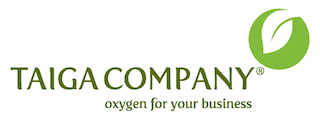Can AI Support Environmental Sustainability? 5 Ways It's Already Making an Impact
As conversations about artificial intelligence (AI) evolve from hype to implementation, many sustainability professionals are beginning to ask: Can AI actually support environmental goals—or is it just another tech distraction?
At Taiga Company, we believe this is exactly the right kind of question. New tools should be approached with thoughtful inquiry and grounded optimism. While there’s plenty of noise in the AI space, we’re also seeing early signals that AI, when applied responsibly, may offer significant benefits in advancing sustainability strategies.
Below are five science-backed ways AI is already being used to support environmental sustainability—with links to explore the data behind each.
1. Optimizing Energy Use and Efficiency
AI can analyze and forecast energy needs, detect inefficiencies in real time, and automate building and grid-level energy decisions. Google, for example, used DeepMind’s AI to reduce the energy used for cooling its data centers by 40%—a significant operational and environmental win.
2. Enhancing Climate Modeling and Prediction
AI improves the accuracy and speed of climate models by processing vast datasets (like satellite data and atmospheric readings) faster than traditional tools. This can help scientists and policymakers better anticipate extreme weather, sea level rise, and other
climate-related risks.
3. Enabling Smarter Agriculture and Resource Use
In
agriculture, AI supports precision farming—using data to guide decisions around water use, fertilizers, and pest management. These tools can reduce resource consumption and emissions while supporting food security.
4. Accelerating Circular Economy and Waste Reduction
AI is being used to automate waste sorting, track materials through supply chains, and improve transparency around recycling and reuse. These innovations support
circular economy goals and help reduce landfill and emissions.
5. Monitoring Ecosystems and Biodiversity
AI-powered sensors, drones, and satellites can track deforestation, monitor endangered species, and even detect illegal activity in protected areas—helping conservation efforts scale more efficiently.
What This Means for Corporate Sustainability
For corporate sustainability leaders, these examples show that AI is not a magic solution—but it might be a valuable tool in the toolkit. Like any technology, its value depends on how it’s implemented, what data it's trained on, and whether it’s integrated with strategic goals.
This is where communications plays a vital role. At Taiga Company, we help organizations articulate how technologies like AI fit into their broader environmental and business commitments. Whether through thought leadership, stakeholder education, reporting language, or digital engagement, our communications support helps make new tools understandable, actionable, and credible. We focus on:
– Translating complex innovation into clear, values-aligned messaging
– Engaging internal and external stakeholders on their learning journey
– Showcasing measurable impact while aligning with evolving standards and frameworks
– Sharing best practices in a way that encourages collaboration and informed adoption
AI is not just a technology story—it’s a communication opportunity. It invites sustainability leaders to educate, inspire, and engage stakeholders around how they are navigating this next chapter.


